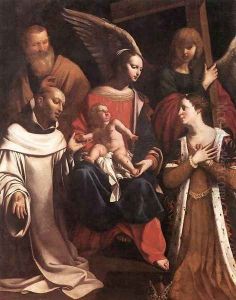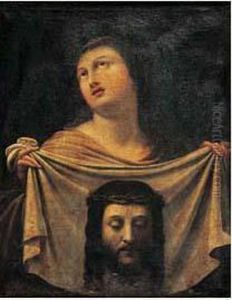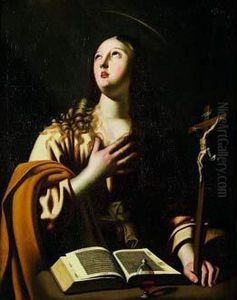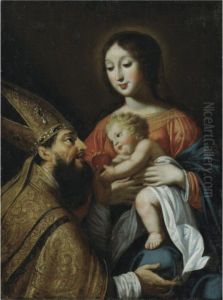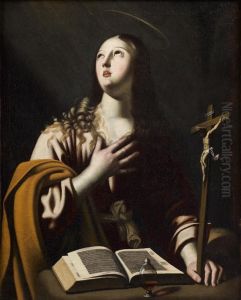Guy Francois Paintings
Guy François was a French painter and draughtsman of the Renaissance period, born around 1520 in the region of Auvergne, France. Although not as widely known as some of his contemporaries, François made significant contributions to the art of his time, particularly within the School of Fontainebleau, which was a hub for artists and craftsmen from Italy and France who were patronized by the French court.
François likely received his training in the arts in France, and his style was influenced by the Italian Mannerism, which was characterized by elongated figures, complex compositions, and a sophisticated use of color and light. Throughout his career, he worked on various religious commissions, which was common for artists of his time due to the Catholic Church's significant role as a patron of the arts.
One of his most notable works is the altarpiece 'The Martyrdom of Saint Sebastian', completed for the high altar of the Saint-Flour Cathedral in Auvergne. This piece is a prime example of François's skill in composition and his ability to convey dramatic intensity and emotion through his work. His paintings often contained religious themes, and he was adept at depicting narratives through his detailed and expressive figures.
Guy François's contributions to French Renaissance art are seen in the way he combined the technical aspects of Italian Mannerism with a distinctively French sensibility, particularly in terms of narrative and decorative elements. His work reflects the cultural exchanges between France and Italy during the 16th century, which were pivotal in the development of European art.
Despite his accomplishments, François did not achieve the same level of fame as some of his peers, and as such, his life was not as well documented. He is believed to have died around 1590, and while his works are not as numerous as those of the most renowned artists of the era, they still provide valuable insights into the stylistic trends and artistic practices of the French Renaissance.
